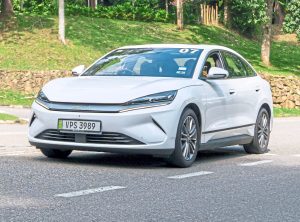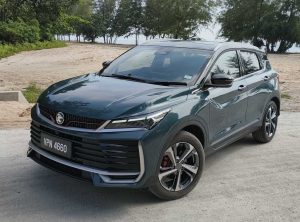Electric car owners being targeted by QR code scam when recharging
By DPA | 17 August 2024
BERLIN: Scan a QR code, enter your payment details, recharge your car and drive on - it sounds like standard procedure when pulling up to a charging point.
But scammers in several countries are using exactly this method to get bank details and credit card numbers off unsuspecting drivers.
Electric car owners should be sceptical of any QR code sticker they find on public charging stations, especially if this is how they are asking for payment.
Fake QR codes have been reported in the UK, Belgium, the Netherlands, France, Spain and Italy, among other countries.
The scam is known as "quishing," and involves getting a person to scan a fake QR code and get them to enter payment details on a fake website. For this reason, cybercrime experts have long been warning against trusting QR codes in public places.
According to Germany automotive magazine Auto, Motor und Sport, investigators suspect that fraudsters are using jammers to prevent the app from being used - and thus forcing drivers to scan the QR code instead.
After scanning the sticker with their smartphone, the driver initially arrives on a website that looks strikingly similar to the website of the charging station operator. They then enter their payment details there, but are unable to use the electricity.
However, to avoid arousing suspicion, the cybercriminals are believed to be programming their scam in such a way that customers get to the correct website of the charging service provider on the second attempt.
That way, they quickly forget their first failed attempt when recharging works as planned.
"A car park is one of the last places where you’d expect to be caught out by online fraud," Simon Williams of UK insurer RAC told PA Media, who says it can be particularly cruel when parking fees are tied to payment at the charging station.
"As if this scam isn’t nasty enough, it can also lead to drivers being caught out twice if they don’t realise they haven’t paid for parking and end up getting a hefty fine."
What can drivers do?
> Always take a close look at the sticker - was it just stuck on? Is there perhaps a second QR code from the actual operator underneath?
> Some operators also have a code on the display. In this case, it is better to scan this - QR code stickers are easier to manipulate. Or, if possible, use the operator's charging app or the credit card reader.
> If the display shows a high amount that is to be debited or if the operator's website seems strange, it is better to cancel the process and block the credit card to be on the safe side.
> Listen to your instincts - if you think something could be up, contact the operator or the police to draw attention to the possible fraud.
Tags
Autos News
Reviews

First drive with the 2025 Hyundai Tuscon and Santa Fe: Seoul...

5.8
Kymco AK550 Premium: Smart easy rider

BYD Seal 6 Premium: Sweet deal, generous kit, sensible prici...

8.7
Mazda CX-80 2.5G PHEV AWD High Plus: Upmarket upgrade

Proton X50 Flagship: Tuned for success

6.6
Triumph Trident 660: Beautifully balanced package

8.4
Mercedes-AMG GLA 35 4Matic: Never a dull moment

Lamborghini Urus SE: Ultimate control
Videos

Free & Easy Media Test: Latest Proton X50 Flagship to Kuanta...

Zeekr Space Sunway City Video

Honda Civic Type R Ultimate Edition: Last 40 Units for Europ...
